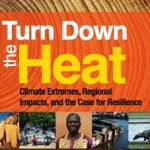About the Author:
Dr. Søren E. Lütken is a senior advisor at Risoe, DTU in Denmark and the author of Corporate Strategies and the Clean Development Mechanism (Edward Elgar © 2008). Prior to this, he has worked in Beijing for nearly five years, partly as administrator of the Danish Government’s climate change programme with China, partly as private advisor to public and private entities in the Chinese climate business. He has a Ph.D. in Climate Policy with particular focus on the Clean Development Mechanism.
This paper by Dr. Søren E. Lütken titled “The Grand Chinese Climate Scheme” is first among the Risoe DTU Climate Paper Series and has been featured by CD4CDM (Capacity Development for the Clean Development Mechanism) website in November 2010.
We, at ThinktoSustain.com, present the Summary of the paper here…
Introduction
Frequently accused in Western media of hiding behind other developing countries so as to avoid committing to any quantitative carbon emissions reductions, China has earned a reputation within developed countries, most recently at COP15 in Copenhagen in December 2009. China has been an important player in earlier Conferences of the Parties as well and has drawn headlines on the same agenda item: an unwillingness to accept quantitative emissions reductions despite consistently iterated requirement by developed country Parties based on the fact that China during the past decade has developed into the world’s largest emitter.
But in that particular respect, on Chinese emissions reductions, COP15 was a turning point. While all procedural traditions during COP15 were turned up-side down and negotiators found themselves in unfamiliar waters with their heads of state ultimately involving themselves in text drafting, China took an unprecedented step in announcing an emission reduction target of its own. Ambitious or not – and this article shall argue that the Chinese commitment is quite ambitious – it changes entirely the picture of a China counting itself among victimized developing countries.
While China indisputably like other developing countries is a victim of earlier times’ greenhouse gas emissions to which it has contributed little, China is just as rightly the largest contributor to future emissions. Nevertheless, negotiators may not have expected such a sudden shift in Chinese position – and evaluators of the outcome of COP15 seem to have chosen to focus on the obstruction to the development of the final document, the Copenhagen Accord, the process of which is well-recorded[1] (while officially disputed by China). But the possible perspectives that the Chinese unilateral commitment opens are yet to dawn on the global climate community depending on the plausibility of the scenario that is presented in this paper. It must be emphasized that the scenario is only one among many possible paths for China, which may or may not include one or more of the elements presented in the paper.
Summary
This paper analyses Chinese climate policies and initiatives and argues that China can, and should, be seen as a climate ‘champion’ that has the potential to change the current market situation both for carbon credits and clean energy technologies. At COP15, China made an ‘unconditional’ commitment to reduce its carbon emission intensity by 40-45% below 2005 levels by 2020, thus breaking away from its traditional stance of non-commitment in global climate negotiations.
While the boldness of the emissions intensity target is debated, it is clear that it stands to radically change China’s approach to, and benefit from, the Clean Development Mechanism (CDM). Specifically, it can no longer be assumed that China will find it beneficial to export its Certified Emission Reductions (CERs) – indeed she is well-positioned to withdraw her credits from the market. Such a move would serve a double purpose: it would help China meet its domestic intensity target by jump-starting a domestic Chinese carbon market; and it could create a credit shortage in the global carbon market, particularly if China can convince her allies in Brazil and India to follow suit, thus forcing particularly Europe to increase investments in renewable energy technology to replace emissions reductions that so far, through the CDM, have been created abroad. As China over the past few years has developed a significant renewable energy industry, she would, by withdrawing the credits, expand the market for her own technology.
Yet another thought-provoking development is that state-owned Chinese developers have already expanded their activities in the African renewable energy sector by entering cooperation agreements with local power corporations and implementing hydro and other renewable energy projects. From here, China could continue to be engaged in supplying CERs to a primarily European market, where she has in this scenario herself induced a credit shortage that may send carbon prices soaring and lead to a scramble for CERs from African CDM projects. With her own financing and technology, and cooperation agreements with African governments, China could, thus, remain a major indirect supplier of CERs, at far-higher CER price than those currently attracted by projects in China. The fascinating thing about this scenario is that China is now in a position to make almost all of this happen on its own.
Click here to read the Full Paper:
Notes:
[1] Per Meilstrup: “Kampen om Klimaet”, People’s Press 2010

About CD4CDM
The United Nations Environment Programme (UNEP) has launched the project “Capacity Development for the Clean Development Mechanism (CD4CDM)” with financial support from the Dutch Government. The UNEP Risø Centre (URC) is the supporting organization contracted by UNEP to implement the project.
The project is intended to help to establish GHG emission reduction projects that are consistent with national sustainable development goals, particularly projects in the energy sector. It will develop national capabilities so that persons in the countries are at the project’s conclusion capable of analyzing the technical and financial merits of projects and negotiating possible finance agreements with Annex 1 countries or investors. For more information, visit http://cd4cdm.org.














